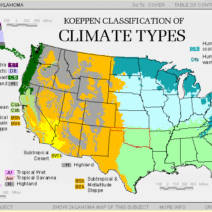Climate change poses one of the gravest challenges humanity faces, profoundly impacting ecosystems, weather patterns, and human livelihoods. Governments around the globe must take substantial and innovative steps to curtail global warming. This article explores multifaceted strategies that can not only mitigate climate change but also galvanize public support for these essential initiatives.
To begin with, enhancing renewable energy infrastructure stands as a pivotal measure. Governments can expedite the transition from fossil fuels to sustainable sources of energy such as solar, wind, and hydroelectric power. An investment in renewable energy technology dissipates the reliance on carbon-intensive fossil fuel sources. Establishing incentives such as tax breaks or subsidies for both consumers and producers of renewable energy can be instrumental. For instance, expanding solar panel subsidies can lead to wider adoption amongst households and businesses alike. Furthermore, prioritizing research and development in energy storage technologies will address the intermittent nature of renewable energy production, fundamentally reshaping the energy landscape.
In conjunction with renewable energy investment, implementing rigorous energy efficiency regulations is paramount. Governments can promote standards for appliances, buildings, and vehicles that significantly reduce energy consumption. For example, stricter energy efficiency labels on appliances can empower consumers to make informed choices, while incentivizing companies to innovate. The retrofit of existing structures with energy-efficient materials not only conserves resources but also promotes job creation in the green construction sector. As a result, economic revitalization can accompany environmental progress.
Transportation reform is another critical component of governmental strategy against global warming. The transportation sector constitutes a significant percentage of greenhouse gas emissions. To combat this, governments must enhance public transit systems, making them more efficient, accessible, and comfortable. By investing in high-speed rail systems, bus rapid transit, and bike-sharing initiatives, cities can reduce congestion and encourage a shift from individual car usage to collective transportation. However, simply enhancing public transportation is not enough; governments must also transition towards electric vehicles (EVs) by providing incentives for both consumers and manufacturers. Establishing extensive charging infrastructure will remove barriers to EV adoption, aiding in decreasing reliance on petroleum-based fuels.
Land use policies present yet another arena for governmental intervention. Zoning regulations can incorporate green spaces and community gardens, contributing to urban cooling and biodiversity preservation. Governments could facilitate afforestation and reforestation projects, recognizing forests as carbon sinks that absorb CO2 from the atmosphere. Moreover, the promotion of sustainable agriculture practices can reduce the carbon footprint of food production. Encouraging organic farming, enhancing crop rotation, and minimizing chemical fertilizer use can drastically lower agricultural emissions. Educating farmers about sustainable methods and providing financial support for adopting eco-friendly practices can create a solution that works both for farmers and the environment.
Moreover, an investment in research and innovation targeting carbon capture technologies is crucial. These technologies, which extract CO2 from the atmosphere or prevent it from entering it in the first place, present a fascinating avenue for addressing climate change. Governments can fund research initiatives to advance these technologies, ultimately leading to their scaling and commercial viability. Partnerships with universities and private enterprises can catalyze developments that are not only economically beneficial but also ecologically transformative.
One often overlooked area involves public policy emphasizing education and awareness. Governments must prioritize climate education, ensuring that the citizenry is well-informed about the impacts of global warming and the actionable steps they can take. Through educational programs in schools and widespread campaigns, citizens can become advocates for sustainability. A better-informed populace can create a culture of accountability towards environmental stewardship. This grassroots activism fosters a sense of community engagement, leading to greater public support for progressive climate policies.
Incentivizing businesses to adopt sustainable practices is another avenue for government action. Establishing standards for corporate environmental responsibility can nudge businesses towards greener operations. The introduction of ‘green certifications’ can encourage companies to minimize waste, optimize resource use, and reduce emissions. Collaborating with the private sector to develop sustainable supply chains can not only diminish carbon footprints but also drive consumer demand for ethically produced goods. Governments must catalyze this shift by declaring transparency in corporate practices a norm rather than an exception.
To amplify the effects of individual governmental policies, international collaboration is indispensable. Climate change transcends national borders, and therefore, collective action is essential for meaningful impact. Governments can engage in international agreements aimed at reducing greenhouse gas emissions, sharing technology, and funding climate adaptation initiatives in vulnerable regions. Developing a cohesive global strategy can forge a united front against the climate crisis, demonstrating that collaborative efforts can yield substantial results.
In conclusion, for governments to effectively reduce global warming, they must adopt a comprehensive approach that integrates renewable energy, transportation reform, land use policies, innovation, education, and international cooperation. By embarking on these multifarious pathways, governments can pave the way toward a greener future, reinvigorating economies, preserving ecosystems, and safeguarding the planet for future generations. The shift in perspective that prioritizes sustainability can not only address the climate crisis but also inspire a contingent of global citizens to champion this imperative cause. The question, however, remains: is there the political will to enact these transformational changes in the face of an ever-pressing climate emergency? As awareness grows, so does the expectation for action. It is time for governments to lead decisively into a sustainable future.








